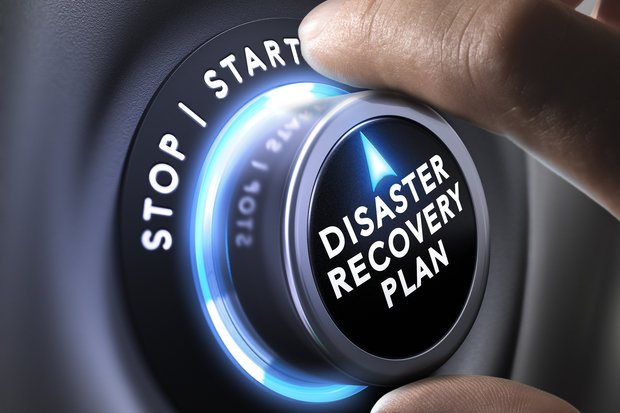The Importance of a Disaster Recovery Plan
It’s always a good idea to be prepared for the unexpected, especially when it comes to protecting your business, employees, and data. From natural disasters to crazy accidents, it’s important to ensure your business can keep running in the event of a disaster or emergency. A disaster recovery plan is a documented process with specific procedures for recovering and protecting a business infrastructure in the event of a disaster. We put together a list of 7 things that every disaster recovery plan should include.

1. Inventory of Assets and Services
Your disaster recovery plan should include a list of company assets in priority order based on which equipment and services have the greatest impact on your organization. This list should include both digital and physical assets (software and hardware). If a disaster strikes, you won’t be able to recover everything immediately, so having a priority list will help ensure the most important applications are recovered first.
2. Data and Backups
In addition to backing up your data and testing it on a regular basis, your disaster recovery plan should include a list of where all of your critical data resides. Having a list of data type and location will help speed up the recovery process.
3. Determine Possible Disasters
Your plan should include a procedure for each possible disaster that is likely to occur. Disasters can range from technical to natural. One rapidly growing disaster that every organization should prepare for is a cyberattack. Getting a business impact analysis and risk assessment can help you determine which disasters are most likely to impact your organization. The risk analysis can also help you evaluate the safety of your critical data and documents.
4. Put Together a Disaster Recovery Team
A plan is only as effective as the people behind it. These team members should thoroughly understand the plan and have designated roles if a disaster occurs. It is helpful to name a coordinator and backup coordinator for each department.
5. Select an Offsite Location
If your location is destroyed, you’ll need a temporary offsite location for disaster recovery. Ensure employees know where to go in case of an emergency or disaster. You’ll need to select an offsite location and have a list of the minimal essential equipment you would need if your inventory is destroyed.
6. Communication is Key
Every disaster recovery plan should include an emergency contact list with names, phone numbers, and email addresses of anyone you might need to contact during the recovery process. This list should include third-party vendors like software and hardware vendors, your Internet service provider, your Managed Services provider, and any data center contacts. You’ll also need a plan for communicating with employees and stakeholders.
7. Testing and Updates
A good disaster recovery plan is updated and tested regularly to ensure it is viable. For example, major software updates would require an update to your plan. Make sure to document a procedure for reviewing your plan on a regular basis, and then be sure to test the plan.
If you’re having trouble getting started or need guidance along the way, give the experts at RTI a call! We can help you every step of the way.
Date Posted: 6/18/18
Date Last Updated: 6/4/19
By: RTI Marketing Team




